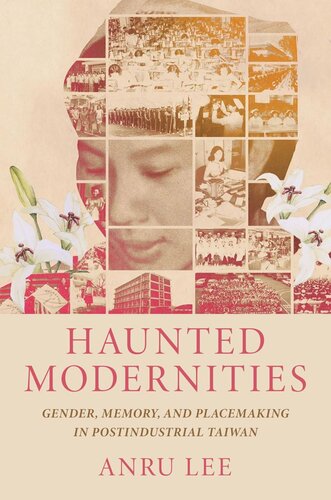

Most ebook files are in PDF format, so you can easily read them using various software such as Foxit Reader or directly on the Google Chrome browser.
Some ebook files are released by publishers in other formats such as .awz, .mobi, .epub, .fb2, etc. You may need to install specific software to read these formats on mobile/PC, such as Calibre.
Please read the tutorial at this link: https://ebookbell.com/faq
We offer FREE conversion to the popular formats you request; however, this may take some time. Therefore, right after payment, please email us, and we will try to provide the service as quickly as possible.
For some exceptional file formats or broken links (if any), please refrain from opening any disputes. Instead, email us first, and we will try to assist within a maximum of 6 hours.
EbookBell Team

4.7
56 reviewsIn 1973 twenty-five young women drowned in a ferry accident on their way to work in factories in Taiwan’s Kaohsiung Export Processing Zone. Their remains were recovered and interred collectively in what came to be called the Twenty-five Maiden Ladies Tomb. Without a husband’s ancestral hall where they would have been laid to rest, the spirits of these unmarried women were considered homeless and possibly vengeful, and so the Maiden Ladies Tomb was viewed as a place to be avoided—especially by young men traveling alone, fearful of encountering a female ghost searching for a husband. Over the years, numerous plans were made to revamp the tomb site; finally, in 2008, at the urging of local feminist communities, the Kaohsiung City government renovated the Twenty-five Maiden Ladies Tomb and renamed it the Memorial Park for Women Laborers.
Haunted Modernities interrogates the nature of shared expressions of history, sentiments, and memory as it investigates the role of these women and other female workers in the shifting public narrative during and after the Maiden Ladies Tomb renovation. By exploring the ways in which the deceased young women were perceived to “haunt” the living and the diverse renovations recommended, the book illuminates how women workers in Taiwan have been conceptualized in the last several decades. In their proposals to renovate the tomb, the interested parties forged specific accounts of history, transforming the collective burial site according to varying definitions of “heritage” as Taiwan shifted to a postindustrial economy, where factory jobs were no longer the main source of employment. Their plans engaged with acts of remembering—communal and individual—to create new ways of understanding the present. The Twenty-five Maiden Ladies Tomb as a heritage site elucidates how “history” and “memory” are not simply about the past but part of a forward-looking process that emerges from the social, political, and economic needs of the present, legitimized and validated through its associations with the past.